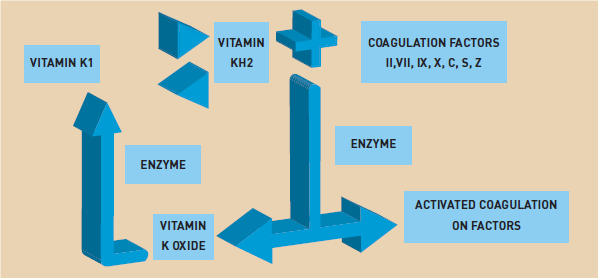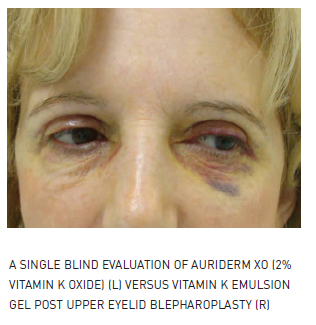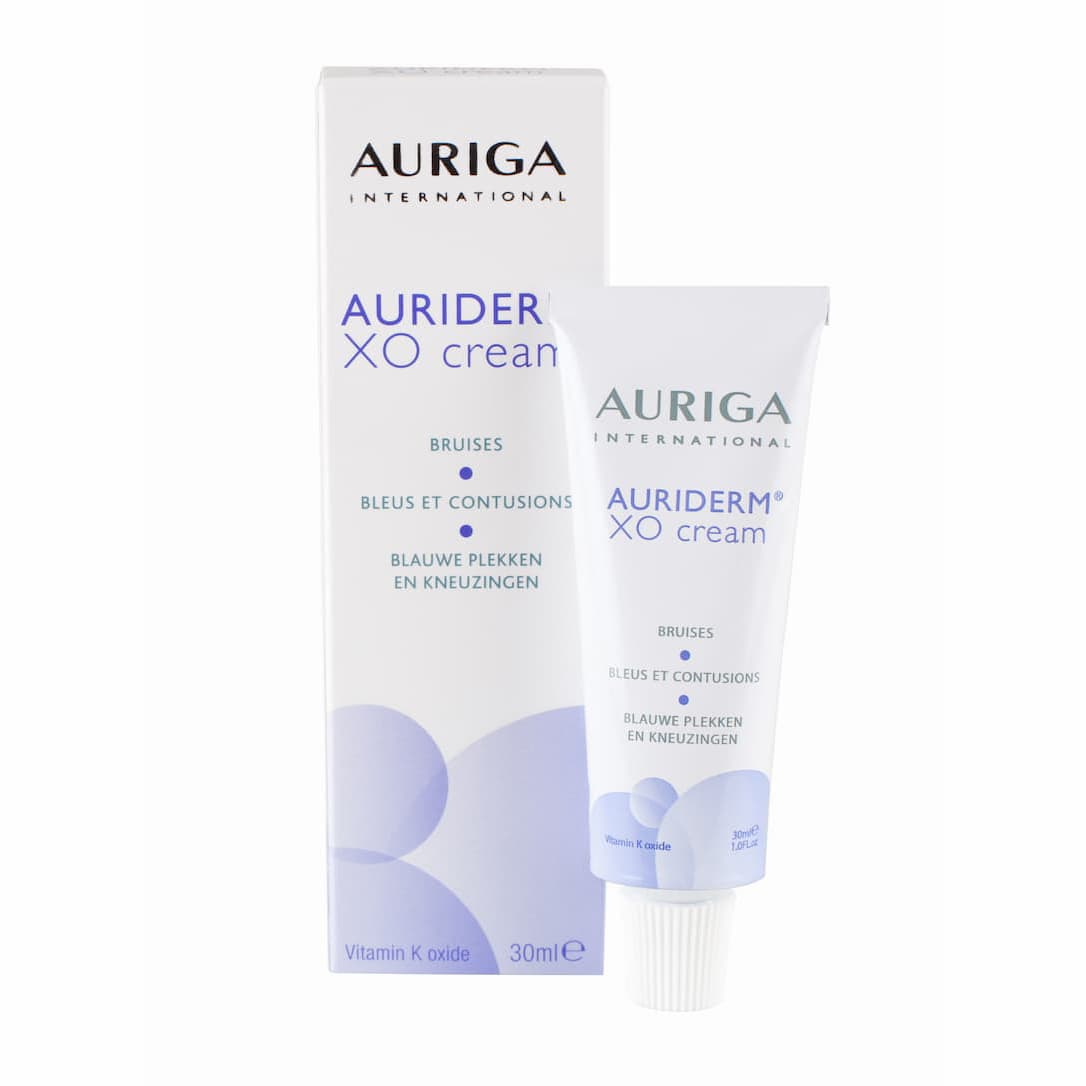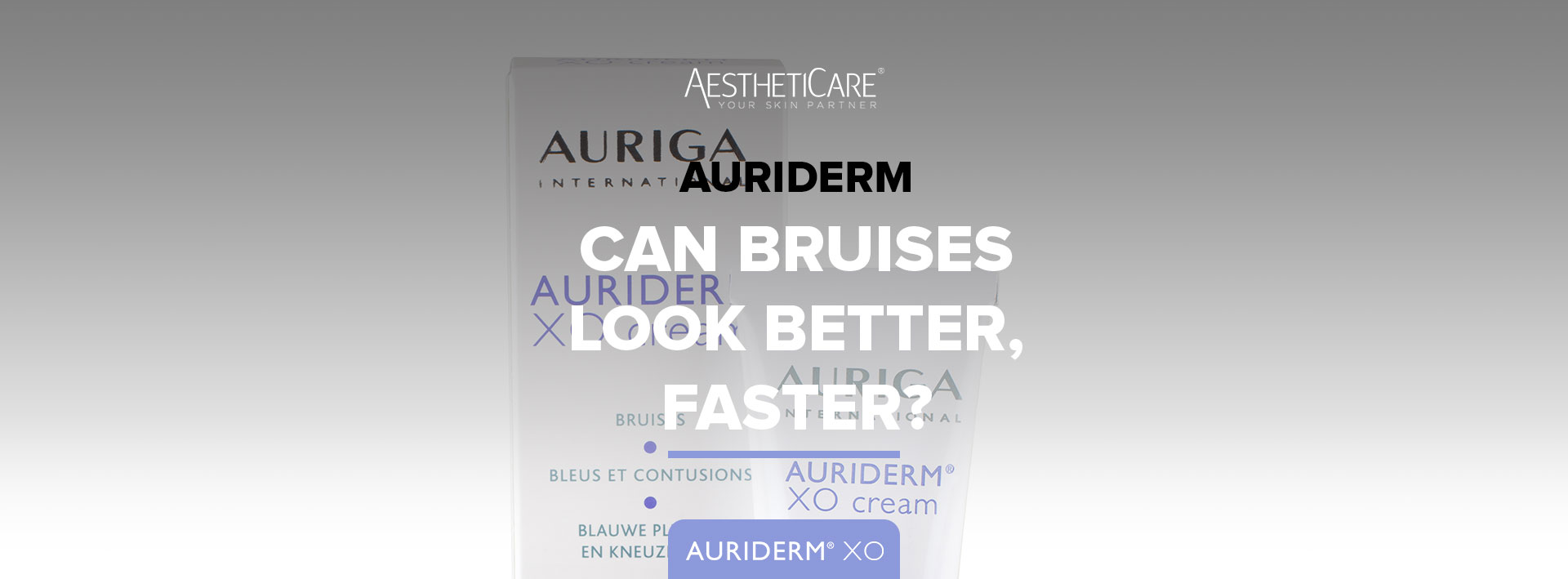Managing bruises after aesthetic procedures.
Aesthetic procedures that cause damage to the blood vessels in the dermis and subcutaneous layers of the skin will cause bruising. The invasiveness of the procedure, and as a consequence the extent of the vascular damage will dictate the extent of the bruising. The patient’s susceptibility to bruising can also impact on the extent and severity of the bruise – the same procedure can often result in different levels of bruising in different patients. This individual response is related to blood vessel wall strength, the amount of blood vessels in a given area and the patient’s blood coagulation and clotting rate.
The aesthetic procedure and the resulting enhanced appearance are the primary focus for the practitioner and patient alike. Achievement of this enhanced appearance whilst causing the minimum disruption to the patient’s lifestyle is a demand medical aesthetic practitioners increasingly report with respect to their patients’ expectations. Bruising, although often an inevitable transient consequence of the procedure, can have a major impact on the patient’s perception of the treatment’s quality and success.
Aesthetic practitioners already deal with this issue, the most commonly utilised method is ensuring the patient is aware that bruising can occur and to ensure that the patient’s expectations are realistic; although as the patient response with respect to bruising is not always predictable there is a balance between ensuring the patient is aware without causing disproportionate concern.
Another mechanism is recommending or providing a product that will help make the bruise look better faster if and when it occurs. The biggest issue raised with respect to this is the limited number of products available for this use and confidence in subsequent efficacy. Auriderm XO is a cosmeceutical cosmetic bruise relief cream with an established evidence based and track record of use that can provide an ideal solution for aesthetic practitioners.
The bruising and blood – the coagulation/clotting process
Bruising is the presence of blood that has leaked from blood vessels in the dermis and subcutaneous layers and is visible through the epidermis. This is normally due to traumatic damage of the blood vessel. The extent and time to heal of a bruise is dependent upon the amount of blood that has perfused through the tissue and the rate at which the blood has absorbed. bsorption is dependent upon the breakdown of haemoglobin and it is the resulting breakdown products that are responsible for the changes in colour of a bruise. The iron released from the breakdown of the haemoglobin can result in it being deposited in an insoluble oxidised form under the skin known as haemosiderin with a characteristic red/brown colouration. It is important that these haemosiderin are removed for the bruise to fully resolve. This normally happens as part of the bruise healing process but sometimes they can remain, particularly in areas where the circulation is less efficient such as the legs post sclerotherapy, leaving a persistent area of pigmentation.
When blood vessels are damaged by an aesthetic procedure the body’s blood coagulation and clotting process will start. The process can be summarised into five parts:
- Vascular constriction – restricting blood flow
- Formation of a ‘platelet plug’ in the damaged blood vessels
- Re-enforcement of the ‘plug’ with a fibrin mesh – the clot
- Regulation of the level of clotting and subsequent dissolution of the clot
- Breakdown and absorption of the blood in and from the surrounding tissue
The above process has two pathways – the extrinsic, that occurs in response to damage to the blood vessels, and the intrinsic, that occurs within the blood vessels due to abnormalities in the vascular walls. Post procedure both pathways are active and intrinsically linked.
The role of vitamin K and vitamin K oxide
It is known that vitamin K has an essential role to play in this process although all of its mechanisms are not particularly well understood. What is clear is that vitamin K is necessary for the activation of at least seven of the coagulation factors and proteins that are essential for both the extrinsic and intrinsic pathway and that several of these factors and proteins are active for a number of days once activated. Vitamin K’s role in blood absorbtion and the breakdown and solubility of haemosiderin has also been demonstrated. Utilising nanosome technology, topical vitamin K, used for three weeks, has been shown to visibly reduce persistent haemosiderin formed after sclerotherapy and vein stripping procedures (1) and bruises formed by injecting volunteers’ own blood into their forearms clear faster when using topical vitamin K in an emulsion gel (2).

It is also known that vitamin K is lipophilic and relatively unstable. It is normally made available in the body from the diet (green vegetables) and bacteria in the digestive process. It is not readily stored in the body so ongoing availability is necessary. When vitamin K activates the coagulation factors and proteins it is oxidised to form stable vitamin K oxide, which can then be recycled within the body to maximise availability of vitamin K. Thus, vitamin K oxide is a stable metabolite of vitamin K and a natural component of the coagulation process.
Auriderm XO
Auriderm XO is unique in the way it utilises vitamin K oxide. It was found that vitamin K in a cream or gel formulation could breakdown, particularly in the presence of UV. This limited the availability of the vitamin K and, importantly, the breakdown products were found to have the potential to cause irritation.
Auriderm XO was developed to use vitamin K oxide, the natural stable metabolite of vitamin K, maximising vitamin K availability and avoiding the potential for irritation and side effects, the latter being demonstrated in irritancy and phototoxicity studies.
Secondly, the lipophilic nature of vitamin K has to be addressed in the formulation. If a conventional cream is used the vitamin K oxide would be trapped within the lipids in the cream and not be available to penetrate the epidermis. The Auriderm XO emulsion gel encapsulates the vitamin K oxide in microscopic phospholipid spheres known as liposomes. These protect the vitamin K oxide and ensure they penetrate the epidermis, delivering vitamin K oxide to the site of the bruise. The Auriderm XO formulation is unique, patented and
optimises efficacy.
A good demonstration of Auriderm XO (2% vitamin K oxide) efficacy was shown in its use post upper eyelid blepharoplasty in an assessment of 10 patients (3). The Auriderm XO was gently massaged into the area around the patient’s right eye from the second day post-surgery, an emulsion gel containing vitamin K (not the oxide form) was used on the left eye area. After only four days use and only six days after surgery, the Auriderm XO treated eye area exhibited significantly less bruising (assessed as a 54% reduction across the study patient group).


By applying twice daily to the affected area (not directly onto the wound or mucosa) Auriderm XO helps post procedure bruises look better faster and as a result can enhance patient satisfaction.
References
- Blanchemaison, Angéiologie, 2003, Vol. 55, no. 4, pp.52 to 54
- Karavani et al, Tiré à Part du Journal de Médecine Esthé et de Chirurgie Dermatologique Volume XXX1, No. 123 Septembre 2004, pages 169 à 172
- Data on file
By Roger Bloxham:
Roger is managing director of Ferndale Pharmaceuticals Ltd and its aesthetic division AesthetiCare. He has a degree in applied biology and more than 30 years’ experience in the pharmaceutical, healthcare and cosmetic industry. With a particular interest in dermatology, aesthetics and topical formulations.
CONTACT US
T: 0800 019 5322
E: [email protected]
W: aestheticare.co.uk
Other Links

©2025 AesthetiCare, a division of Ferndale Pharmaceuticals Ltd



